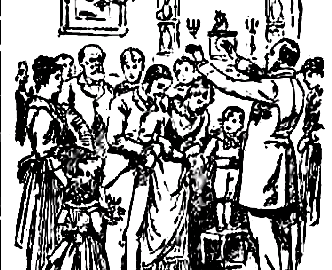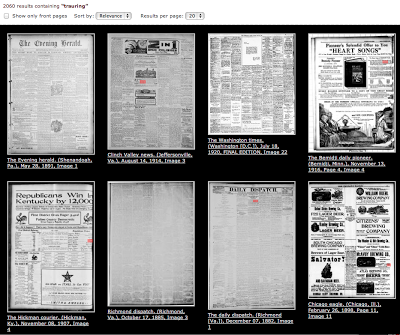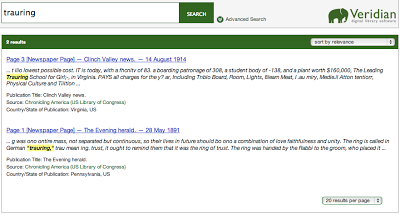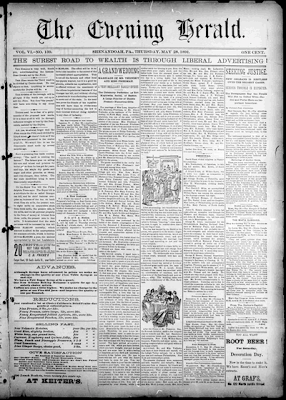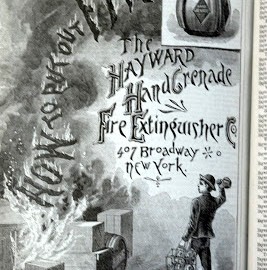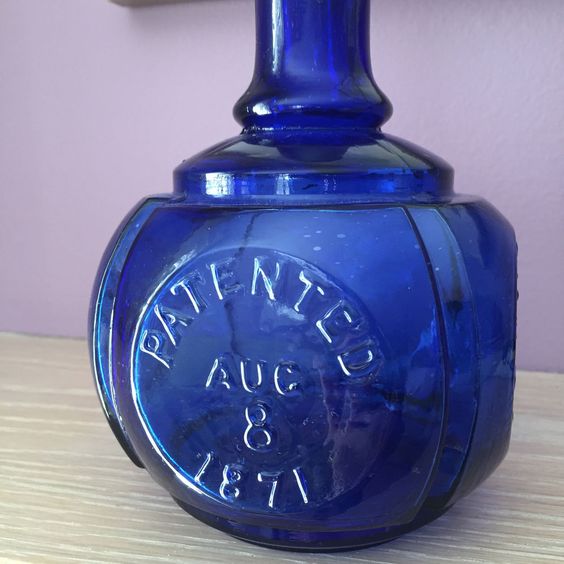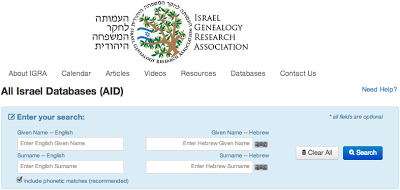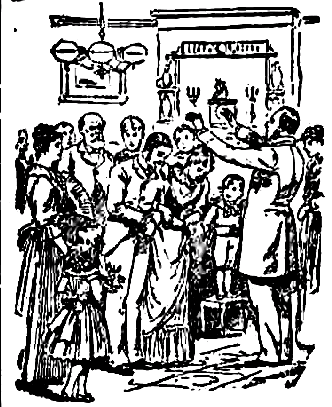 |
For those who have never looked at my bio on the right side of this page, my last name is Trauring. I’ve written a bit about the name change from Traurig (German for ‘sad’) to Trauring (German for ‘wedding ring’). While Trauring is a fairly unique name (show me a Trauring and it’s 99% likely I’ll show you how they’re related to me), it has an interesting quirk in doing online research. When researching online databases of newspapers, the name Trauring for some reason is commonly confused with the word Training. Depending on the quality of the scanned newspapers, the the quality of the optical-character-recognition (OCR) done on the scans, you’d be amazed how many hits are for the word Training and how few are for Trauring.
While skimming my Google+ feed recently, I came across an article by Kenneth Marks about the newspaper search site Elephind. Elephind is a newspaper search aggregator created by digital library developer DL Consulting in New Zealand. It provides a single search interface to multiple newspaper search sites, including the US Library of Congress’ Chronicling America site, and Australia’s Trove site. Currently the site claims access to 1,034 newspaper titles (and 1,099,175 newspaper issues). Most of those newspapers come from the two sites already mentioned (845 from Chronicling America and 111 from Trove), with other smaller local newspaper search sites included from the US, Australia, New Zealand and Singapore.
One of the annoying things about Chronicling America is that the search results don’t show the context of the hit, but rather just show a thumbnail of the page. Combine that with the unfortunately low level of OCR in the Chronicling America database, you spend a lot of time looking through false hits. For example, here is a search on Chronicling America for ‘trauring’:
You might notice the red highlighting which is supposed to show where the hit occurs on the page, but I defy you to actually read any of that text. In order to figure out the context you need to click on the image and load the full version of the page and find the text on the page. With 2,060 results, you can imagine how much time it would take to go through all those pages.
Now let’s take a look at the Elephind results:
The search was specifically restricted to Chronicling America, to try to get the same results. Oddly, instead of 2,060 results there are only two. If you take a close look at both sets of results you’ll notice that the two results are the same as the first two results on the Chronicling America site, although in reverse order. You’ll also notice that the first result on the Elephind site illustrates the general problem with searching OCRed databases for the name Trauring:
.. t ilio lowest possible cost. IT is today, with a fhcnltv of 83. a boarding patronage of 308, a student body of -138, and a plant worth $160,000, The Leading Trauring School for Girl;-, in Virginia. PAYS all charges for the y? ar, Including Tnblo Board, Room, Lights, 8leam Meat, I .au miry, Medie.il Atton tentiorr, Physical Culture and Tiiltlon …
Besides the general incomprehensibility of the text, you’ll notice the phrase ‘The Leading Trauring School for Girl’ is clearly supposed to have the word Training, not Trauring. Of course, the important thing to notice here is that the user interface actually does show you the context. I don’t need to load the image and look, I can immediately dismiss the search result, which is very welcome. Why there are only two results is a mystery, however.
The text recognition on the second result (from The Evening Herald of Shenandoah, PA) is a bit more readable, and while the story is not about my family, it is interesting in that it mentions Trauring in the following context:
After pronouncing two benedictions the Rabbi took in his hand the wedding ring, saying, as the ring was one entire mass, not separated but continuous, so their lives in the future should be one–a combination of love and faithfulness and unity. The ring is called in German “trauring,”–trau meaning trust, it ought to remind them that it was the ring of trust.
A very interesting interpretation of the word trauring, giving it more meaning that the simple definition ‘wedding ring’. The story is something very common in newspapers of the day (this article is from May 28, 1891), chronicling the big local social events, this one being a Jewish wedding in Shenandoah, PA, described as “one of the most brilliant affairs of the kind ever celebrated in this section of the country”. This wedding, between Lena Friedman and Simon Yedinsky, is described in great detail, has two illustrations, and even lists which guests gave which gifts. From a genealogical point of view these kinds of articles are sometimes goldmines. In my own research I’ve come across wedding descriptions that listed many relatives as guests, sometimes specifying them as such, and sometimes not, but all the information is useful.
 |
Anyone have a good story on the meaning of their name? Share your story in the comments.
